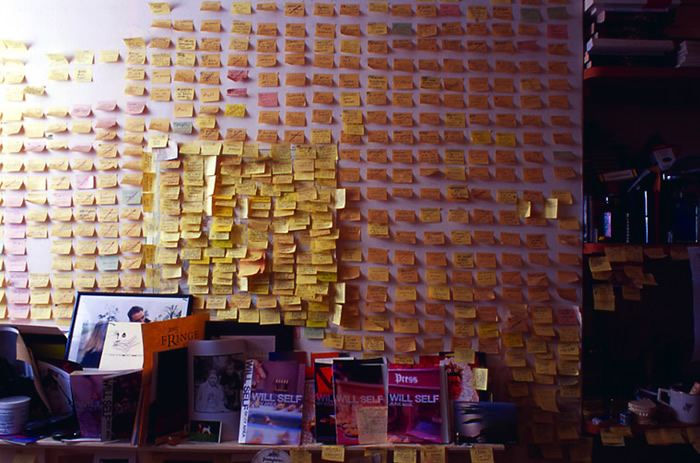It’s a strong claim: “The best fish and chips in the world”; as is another bon – but ungrammatical – mot, attributed to the Master Fryer himself: “There is no chip ever cut by man which cannot be cooked to perfection in three minutes.” Taken together, these propositions suggest a sort of fried-food cosmology – or possibly a gnosis, because, if you want to acquaint yourself with Harry Ramsden’s second law of chipodynamics you’ll have to pitch up at one of his 30-odd restaurants, which are scattered throughout the British isles much as . . . well, much as the crushed, dead chips were scattered on the tiled floor of the food court when I swung by the other day to test empirically the validity of his first law.
Of course, Ramsden himself is long gone. An interwar figure, he appears in sepia tones, grinning out from the chippy’s wall and, with his wing-collar and natty hat, closely resembling a cross between Wilfrid Brambell and Neville Chamberlain. He started the business in a hut in Guiseley, Leeds, in the late 1920s, but it’s grown and grown over the years, being snaffled up by corporate after corporate then regurgitated through mergers. The hut grew into a 250-seat restaurant – apparently the biggest fish-and-chip eatery in the world – but now this has gone the way of all chip fat: down the drain. After losing money for some years, the parent company flogged it to an outfit called Wetherby Whaler.
I’ve eaten in various Ramsden’s over the years, hanging on pathetically to the notion that buried in their red-and-white Formica frames there must remain beating a distinctively northern heart. But then, what’s in a white rose? A Harry Ramsden’s by any other name would probably taste remarkably similar. What I’m driving at here is that the food has not been great – contra Harry’s law, I’ve found soggy chips, pulpy fish in grotty batter, and mushy peas with the flavour and consistency of plumber’s mastic. I gave up on the chain for years after finding myself sitting over one too many inedible carbo-fests and ruefully contemplating boshing something up out of these building materials masquerading as nutrition.
Still, everyone deserves a second chance (except for me; I deserve at least 50), so I headed for that little beachhead of the north in the south, Euston Station, to see whether anything had improved. To begin with, the signs were not auspicious – there was the previously mentioned detritus on the floor, while on the counter sat a styrofoam tray in which reposed all of the lately fried elements tending towards gelid entropy. I shuddered, and thought: I don’t have to do this . . . I could pick up some sushi at M&S, or a burger from the King, or some noodles from Nam-Po! – hell, I could even buy a baguette from Delice de France and another from Upper Crust and have a sword fight with myself, scampering this way and that across the concourse until I was arrested by the British Transport Police. (And surely, there can be no richer and more satisfying humiliation than that.)
Still, when the going gets tough, the tough get eating. The man behind the counter was the sole of courtesy as I havered between cod, plaice and haddock; a wholly otiose decision, since, as we all know, there should be a moratorium on the fishing – and by extension the eating – of all four. But before long I had my own styrofoam tray and was ready to assay Ramsden’s second law.
Well, I can report that the chips weren’t too bad at all: their outer layer pleasingly browned and crispy, their insides firm and yet melting. The batter on my cod was also of the right ductility, while the fish within flaked to perfection. As for the mushy peas – on the basis of their texture alone I would’ve sworn I was eating guacamole. True, I make no mention of the flavours of any of this food, but why would I? If you want flavour, stop at home – fast food aspires to the condition of being photographed, not consumed.
I ate about half my chips and all my battered cod and mushy peas. I drank my crap coffee, I listened to the train announcements and wished I were about to head north out of this cesspit of gourmandising towards a more earthy realm where nowt folk were queer and nowt needed frying for more than three minutes – including bruschetta. For all I know, Harry Ramsden’s may well serve the best fish and chips in the world, or the appearance of this slogan on their walls may be entirely accidental. The truth of both propositions is by no means inconsistent.
